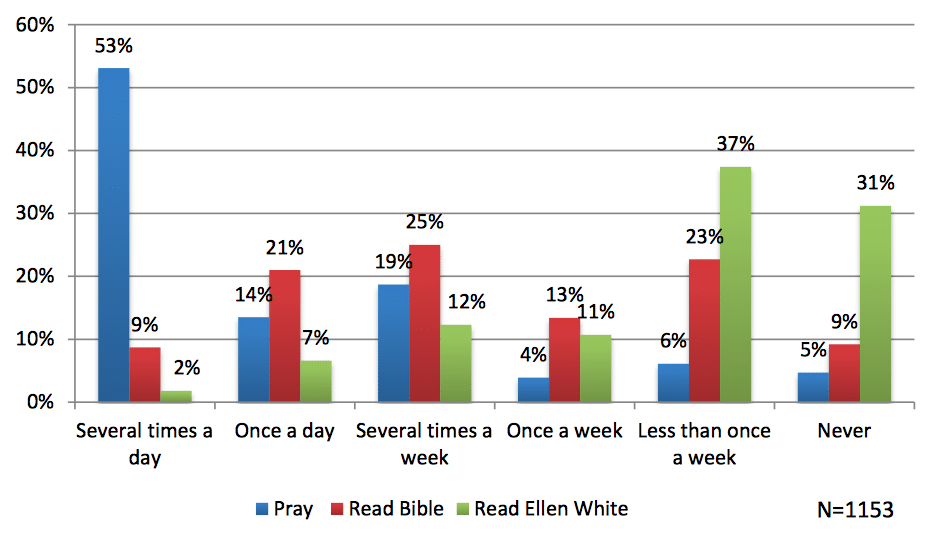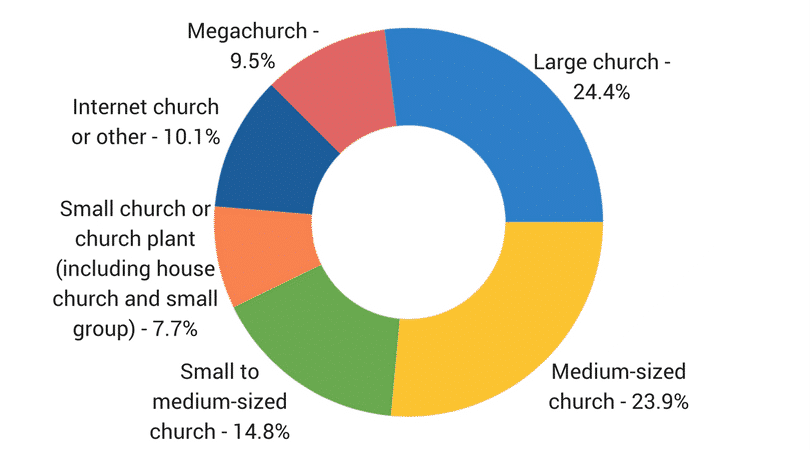Have you ever looked at a landscape covered in snow? Even if you haven’t seen one in person, you’re sure to have seen one in pictures. In the cold of winter, many times it appears that everything is dead; there is no sign of life in the trees, the flowers are dead and buried under a layer of white, and many of the animals are tucked away in their burrows and dens, waiting for warmer weather.
However, amidst the seemingly dead landscape, there is much life. The trees and flowers are underground, preparing to burst forth with foliage and life when the snow melts; birds hop around on top of the snow, eating bits of seeds they can scrounge up; and animals who don’t hibernate may be spotted exploring the wintry landscape.
Many times, things are not as they first appear, and we can see signs of life – if we only look for them.
The Adventist Connection Study (ACS) was commissioned by the General Conference Future Plans Working Group and conducted by the Robert H. Pierson Institute of Evangelism and World Missions at Southern Adventist University in 2013. It surveyed 1,153 individuals who graduated between the years of 2001 and 2012 from three North American Adventist universities: Southern Adventist University, Oakwood University, and Pacific Union College. This research focused on the sense of connection recent graduates of Seventh-day Adventist universities feel to their local churches and to the wider Seventh-day Adventist Church.
Globally, churches of all denominations are seeing their numbers decrease and many fear that this is due to a “disconnected” young adult population. This study, however, revealed some good news for the Seventh-day Adventist Church: there is a large group of connected and active young adults in the Adventist Church today. Of those surveyed, more than four out of every five respondents (86.1%) indicated that they consider themselves Seventh-day Adventists. The second most selected response was “no affiliation,” with only 5.9% of respondents indicating this response.
When asked how frequently they attend religious services (aside from weddings and funerals), over half (58.6%) indicated that they attend every week, with an additional 12.6% of respondents indicating that they attend religious services at least several times a week. Only a tiny percentage (.2%) of respondents indicated that they never attend religious services.
When asked about how frequently they follow certain religious practices, there was a greater variety in answers:
- Over half (53%) of respondents indicated that they pray several times a day; only 5% indicated that they “never pray.”
- But just one in five (21%) indicated that they read their Bible once a day, with only 9% indicating that they read their Bible several times a day.
- Over one-third (37%) indicated that they read Ellen White less than once a week, with an additional 31% stating they have never read Ellen White. Only a handful (2%) of respondents reported reading Ellen White’s readings several times a day and 9% said they read her writings once a day.

Survey respondents were asked about their preference regarding church size. A majority indicated that they prefer a medium-sized church (23.9%) or a large church (24.4%). While the exact reason for this is unknown, this factor is likely do to the increased resources and programming offered by larger churches with greater resources at their disposal. Additional research on this topic is needed.

As seen in a previous blog (found here) survey respondents were asked about their current church membership. While many of the respondents (47%) indicated that their membership lies in the church they currently attend, 18% indicated that their membership lies in a church they previously attend with an additional 21% indicated their membership is still at the church in which they grew up. This may, in part, be to the transitory lifestyle of many young adults. About half of the respondents in this study were single, three-fourths indicated they did not have children, and many were in graduate school. Because of these factors, many of them struggle to find time to connect with their local churches. Additionally, because many of them consider themselves in a transitional period of life, they are hesitant to invest in a church, preferring to wait until they are more settled to do so.
As you can see, these findings point to an active body of young adults within the Adventist Church. Just as signs of life can be spotted on a seemingly lifeless, snow-covered landscape, there is much life still left in the Adventist young adult population. It is time that efforts within the church expand so as to bring in new faces and encourage the current young adult population to include their friends and peers in church activities. By doing so, the Great Commission will be fulfilled and new disciples will be made in Jesus’ name!
To view the full report, click here.
Created in collaboration with the Institute of Church Ministry.

